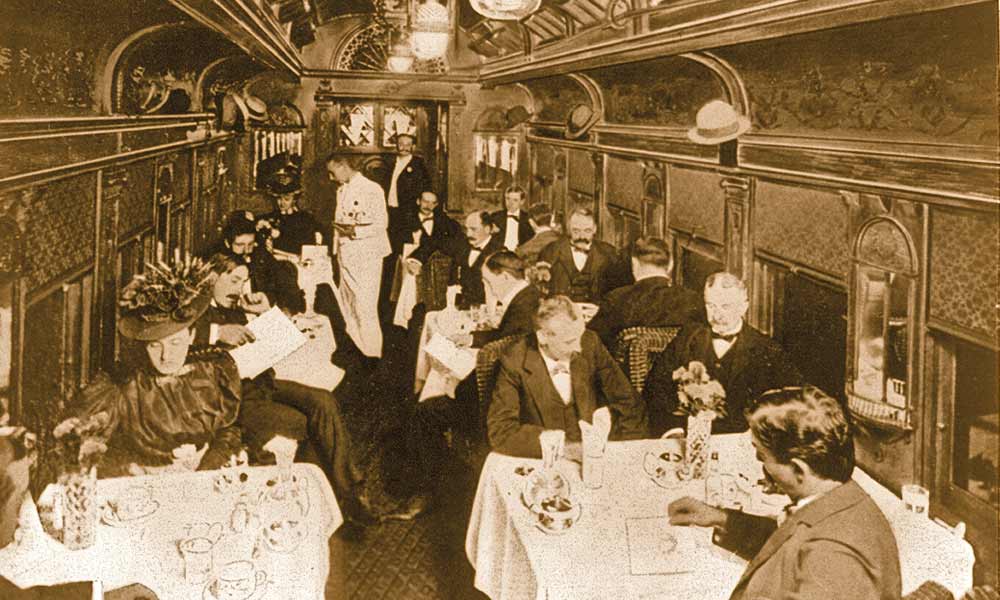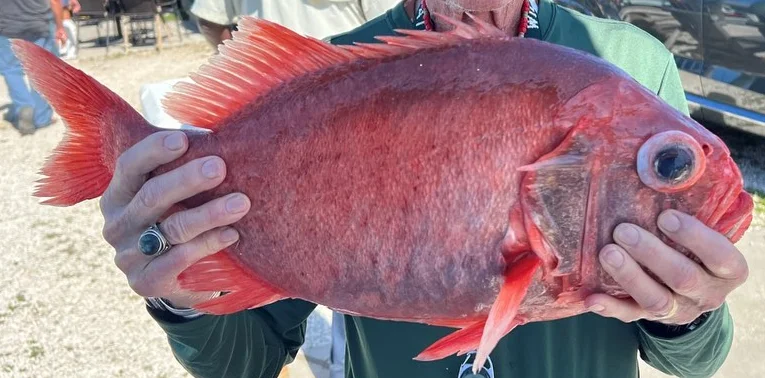Let’s dive into the delicious (and deceitful) world of seafood, where what’s on your plate is as much about clever marketing as it is about culinary prowess. Ever wondered how some seafood went from being virtually ignored or even looked down on, to being the star of the show at high-end restaurants? It’s a tale where marketing savvy turned the ordinary into the extraordinary, and everyone fell for it!
We’re going to discuss five types of seafood that you’ve no doubt experienced: lobster, Chilean sea bass, calamari, orange roughy, and tilapia. The marketing experts would have people believe these were discovered when they shot to fame, but in truth, they were reinvented.
This is the journey of seafood marketing, where names can make or break a fish, and where perception is as pivotal as the catch itself. Where ‘slimeheads’ and ‘Wami Tilapia’ become the craved and the cherished on dinner menus around the globe.
The Luxurious Journey of Lobster from Prison Food to Delicacy
Imagine a time when lobsters, now a symbol of culinary luxury, were as common as dirt and considered fit only for the poorest of the poor. They were trash, meant only to be eaten by trashy people! When European settlers first graced the shores of North America, lobsters were so plentiful that they would pile up along the Massachusetts Bay Colony coastline. These “cockroaches of the sea,” as they were disdainfully called, were relegated to the roles of fertilizer, fish bait, and even prison food.
But the mid-1800s changed all of that and, in some ways, sealed the fate of the once plentiful crustacean. The burgeoning railroad industry saw an opportunity in the lobster’s poor reputation. Unbeknownst to passengers from inland areas, lobsters were considered low-class on the East Coast.
Well, train managers took advantage of this ignorance (and super cheap lobster prices) and began serving this abundant, cheap seafood to passengers, branding it as an exotic delicacy. This move gradually reshaped the lobster’s image, and by the 1920s, its price had skyrocketed.

Although its popularity waned during the Great Depression and WWII, the 1950s marked its triumphant return as a symbol of opulence.
In recent years, the demand for sustainably sourced and organic seafood has hit the lobster market. The Maine Lobster Marketing Collaborative, for instance, emphasizes the sustainable fishing practices of the Maine lobster industry. And while many consumers see this as environmental progress, we, at Dakoa, realize it’s a clever marketing tool to keep lobster prices high and remake the industry that began with incredible rebranding.
From Patagonian Toothfish to Chilean Sea Bass: A Marketing Masterstroke
This brings us to the “market price” Chilean sea bass. A fixture in upscale restaurants, it has an origin story grounded in humble beginnings. This fish, originally known as the Patagonian toothfish, was considered a nondescript deep-sea cod until 1977. That year, a Californian fish merchant named Lee Lantz, while scouting in South America, encountered this fish in Chile. Despite its unappealing and outright ugly appearance, Lantz realized its potential as a culinary canvas, thanks to its white, flaky texture and mild flavor.
Understanding the importance of a marketable name, Lantz rebranded this fish as the Chilean sea bass. This rebranding was a huge success! Almost overnight, a once-overlooked fish became a coveted item on the American culinary scene. Lantz even paid recipe makers and Good Housekeeping writers to talk up the neutral flavor of Chilean sea bass and how chefs can use it to showcase their culinary skills with various seasonings and cooking techniques. Yes, the marketing genius behind the sea bass rebrand used influencer marketing in the late 1970s to convince Americans that they crave toothfish. It worked.
Calamari: The Remarkable Transformation of Squid
Calamari’s rise is just as fascinating! For centuries, squid, known as calamar in Spanish and calamaro in Italian, has been a staple in European cuisine. However, in the United States, before the 1970s, squid was largely disregarded by fishermen, often thrown back into the sea or used as mere bait. After all, their appearance doesn’t exactly scream, ‘eat me’.
In the early 1970s, popular fish stocks ran into trouble. Supply was low and demand was high, and they were getting desperate, which began a search for alternative plentiful seafood sources.
Squid’s unappealing reputation was a problem until an innovative MIT business student discovered that breading and frying squid changed its slimy texture into a crispy, delicious treat, like onion rings. Then the same student rebranded the squid as “calamari” which instantly made it sound more exotic and appealing to Americans.
By the 1980s and 1990s, thanks to this clever rebranding, calamari had become one of the trendiest foods, as noted by global calamari supplier The Town Dock. Today, calamari is a staple on many American menus, often served as an appetizer with a variety of dipping sauces.
Orange Roughy: Because No One Was Buying Slimehead
Orange roughy is a perfect example of a seafood that soared in popularity due to strategic marketing. This fish was originally known as “slimehead” for its mucus-covered head. Based on appearance alone, no one wanted to eat it!
In the late 1970s and early 1980s, savvy marketers saw potential in this fish, and they learned a little something from the clever repositioning of lobster and squid. So, they rebranded the slimehead as “orange roughy,”. The name itself was appealing and colorful, and it worked. Orange roughy was a hit!
But, the orange roughy’s rise to fame is also a cautionary tale. Its popularity grew so fast that it quickly led to overfishing, which concerned conservationists and required stricter fishing regulations.
Tilapia: The Masterstroke of Marketing Multiple Farm-Friendly Fish Species Under One Name
Tilapia, a fish that has found its way onto dinner plates around the world, owes much of its popularity to strategic marketing and positioning. Originally, tilapia wasn’t widely known or popular in the American market. Its rise began in earnest in the 2000s when it was marketed as a healthy, sustainable, and affordable alternative to more traditional seafood choices.
The marketing campaigns emphasized tilapia’s mild flavor and versatility in recipes, while talking up its reputation as a “clean” fish that’s easy to farm with minimal environmental impact. This almost immediately made it a darling of the burgeoning sustainable food movement, particularly for the health-conscious and environmentally aware consumers.
But, the term “tilapia” doesn’t refer to a single fish but rather to a group of nearly a hundred cichlid species, mostly found in freshwater. This group includes fish species with names that are far from catchy or marketable. We’re talking names like “Wami” and “Coptodon” and most of these species are invasive fish, which didn’t help their marketability either.
Marketing these diverse species under the single, easy-to-pronounce, and neutral term “tilapia” was a stroke of genius. It provided a unified, consumer-friendly identity to a variety of fish that vary significantly in their native habitats and characteristics, not to mention, reputations.

This blanket term meant no one had to market each species under its specific name, many of which carry geographically or biologically specific connotations that often don’t resonate with a global audience.
Some of the real names of these fish, like “Blue Kurper” or “Nile Tilapia” carry less than pleasant meanings or translations in some languages and countries. By choosing the term “tilapia,” marketers managed to create a global brand that signifies a mild-flavored, versatile, and healthy fish, appealing to a broad consumer base. And, most people who purchase tilapia at Walmart, have no idea that they’re buying one of a hundred types of fish.
Beyond clever marketing, tilapia’s story is about the power of aquaculture and its role in feeding a growing global population. The fish’s ability to thrive in farm conditions, with low risk of disease and parasites, has been a key factor in its marketing success because it’s avoided the biggest issue every other seafood on this list experienced… overfishing, which resulted in low supply and higher prices.
Like orange roughy and other seafood that have risen to fame through marketing, tilapia’s story combines consumer appeal with a narrative of sustainability and health, showcasing the multifaceted impact of marketing in the seafood industry.
Conclusion
So, what’s our takeaway here? Well, we can appreciate the power of a name and the influence of strategic branding. From the luxurious ascent of lobster from prison food to a delicacy, to the reimagining of the Patagonian toothfish into the chic Chilean sea bass, and the rebranding of slimehead to the elegant orange roughy, each story follows a similar branding recipe that’s been used for centuries.
The tale of tilapia, a term that covers a hundred fish, shows the cunning artistry in the seafood industry. These narratives aren’t just about changing perceptions; they’re about the ingenuity of human creativity in transforming the mundane into the coveted. They remind us that in the world of food, as in life, perception often shapes reality.





















